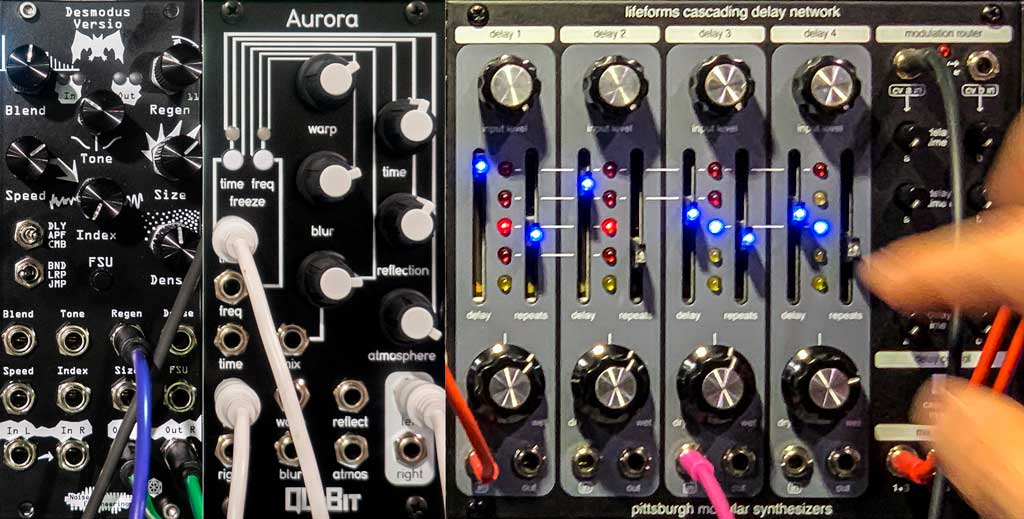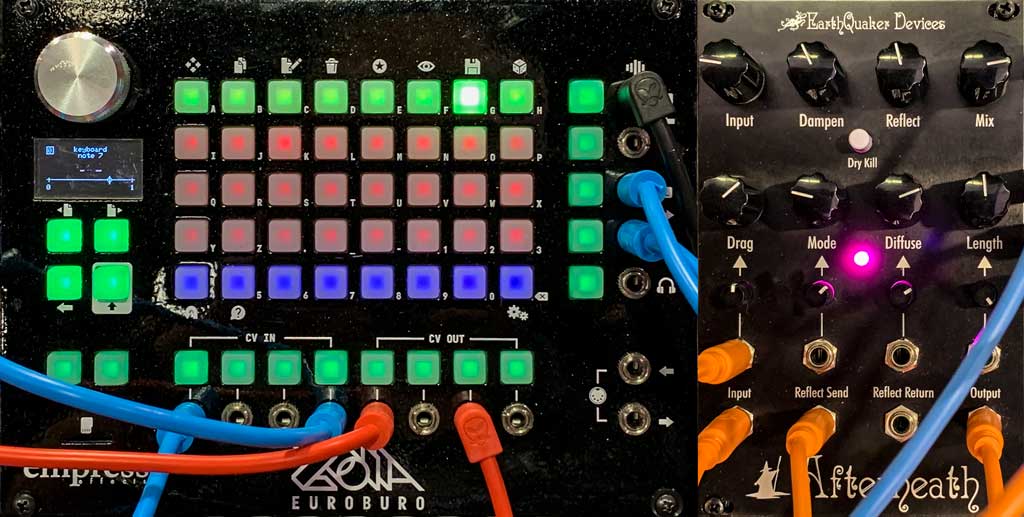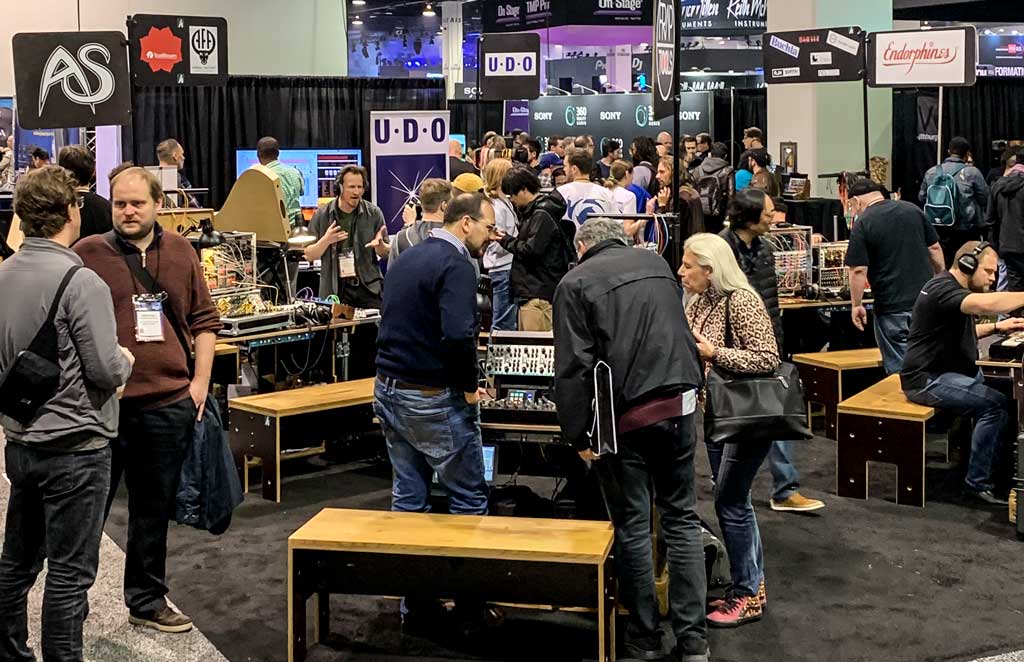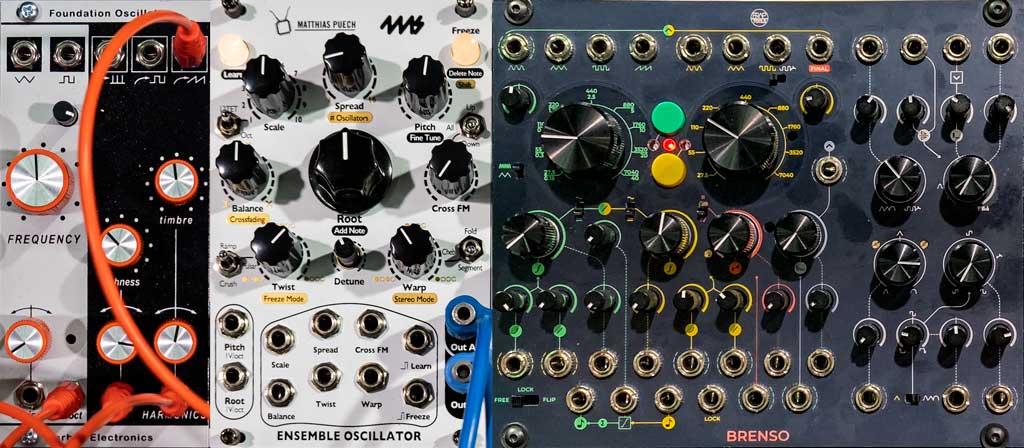Rather than do my normal in-depth interviews with each module creator, this year I’m giving a quick review of the new modules that resonated with me the most. That does not mean all of the other modules were not cool and may be more appropriate for the music you make; I just thought it would be nice to focus on a personal perspective, in contrast to all of the trade show videos already available online.
More Oscillators
There were several new oscillator designs shown at NAMM. My personal favorite was the Verbos Foundation Oscillator. It has an analog triangle core design, that then feeds a waveshaper/folder (labeled Richness) that produces three different target shapes, and a Timbre control that fades between a sine wave and the complex result. This simple design produced a wide range of pleasing, easy-to-control sounds with a very wide “sweet spot” (in other words, it sounded good at pretty much any knob setting, rather than requiring you to hunt out a few good ones). It’s also nicely sized at 12hp; it’s also not cheap at $475 USD. Price aside, this will be a good first or second oscillator for a lot of users.
Also interesting was the 4ms Ensemble Oscillator. This is essentially an additive synthesis oscillator with a set of “macro” controls that change the tuning relationship between the 16 components oscillators (both in terms of scales, and detuning for “swarming” sounds), as well as high versus low harmonic balance – sort of a “lite” version of the Xaoc Devices Odessa. Add in waveshaping and a lot of voltage control, and personally thought it made a great drone monster. The only parameter I was less than pleased with was its Cross FM where the harmonics modulate each others; the results very quickly sounded harsh. On the other hand, 4ms was demonstrating using it for complex percussion sounds where a burst of harshness works very well. It is reasonably priced at $299 USD, and surprisingly compact for what it does at 16 hp.
I also spent some time playing with the Frap Tools Brenso analog complex oscillator. This module has a lot of excellent sonic options, such as both exponential and though zero linear FM, different types of sync, wave shaping and folding, amplitude modulation, crossfading, and more. Although I certainly did not master it in the 15 minutes I spent with it, I suspect it will take over the roll as the primary “complex” oscillator in my studio system. At 30 hp it is a similar size as other complex oscillators; the €629 price tag is not low but also not out of line with other high-end complex oscillators and similar modules.
Effects Modules

We’re seeing a new wave of Eurorack format effects that go beyond simple BBD delays or multi-effects based on the popular Spin chip (although I am still deeply in love with the Happy Nerding FX Aid).
At NAMM, both Noise Engineering and Qu-Bit had new reverb modules promising some non-standard sounds – both were not finished yet, but both sounded promising. Pittsburgh Modular had a new echo that contained four sections that could be patched in series or parallel, with individual outputs so you could loop through external modules and back into another echo unit to processed the feedback or additionally echoed sounds. The Pittsburgh unit had a nice classic sound, but was not based on BBD chips, so it was cleaner and quieter.

More pedal manufacturers are also getting into the Eurorack market. Empress Effects took their Zoia programmable device and made it into the Euroburo module with four CV inputs and outputs. They have not announced a price yet, but I heard that it will be pretty attractive. The Zoia is immensely powerful – it is like having a modular inside a module – but it also has a tiny display and tons of buttons that change function, making it not the most immediate device to use. However, it will definitely appeal to users who are very focused and want to try to wring the maximum out of a tiny package.
EarthQuaker Devices also took their Afterneath delay-line-based reverb and made it into a Eurorack pedal with voltage control over the Drag, Mode, Diffuse, and Length parameters. Its price is $249 USD, which is not too much over the price of the pedal version. This and the rumored Zoia price range encourages me that pedal manufacturers are going to be more aggressive about making module versions more affordable, compared to the initial offerings from other manufactures moving from pedals or rack-mounted effects into the Eurorack format modular world.


